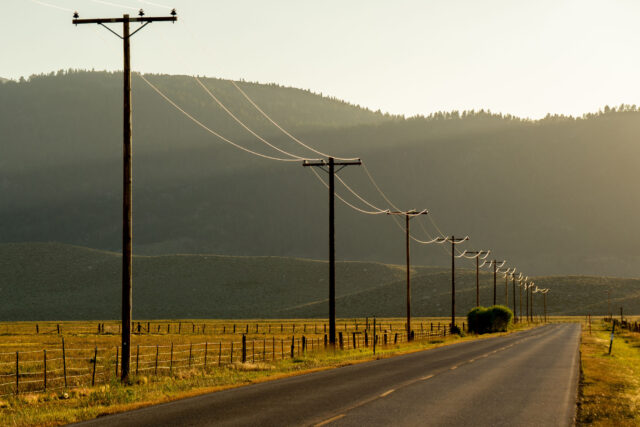After shining a spotlight on the importance of the internet for education, health care, and employment, the COVID-19 pandemic spurred historic federal and state investments in broadband. Passed in 2021, Senate Bill (SB) 156 is California’s largest public investment in broadband, dedicating over $6 billion to expand infrastructure, address affordability, and promote digital literacy, with the goal of connecting the two million or more California households that still lack broadband access.
California is gearing up to expand broadband
As part of SB 156, the state plans to acquire, build, maintain, and operate a “middle mile” network that will enable greater internet connectivity for homes, businesses, and community institutions. This state-owned network could help reach areas that have historically been overlooked by private internet service providers. SB 156 also includes funds to support local broadband deployment in underserved communities.
To better understand the barriers to expanding broadband, we conducted 41 interviews with county offices of education, local governments, the California Public Utilities Commission’s regional broadband consortia, tribal nations and associations, and nonprofits. The interviews addressed broadband projects across 54 of California’s 58 counties, which collectively serve 92 percent of the state’s diverse population.
California’s proposed middle-mile network prioritizes unserved and underserved areas

SOURCE: Authors’ calculations using California Department of Technology middle-mile network map and California Public Utilities Commission (CPUC) broadband coverage data.
NOTE: Advertised download speeds are reported at the census block level. CPUC data do not have reported download speeds for all of the state’s census blocks.
Communities face myriad obstacles
Local communities must contend with numerous barriers to installing broadband:
- In rural areas, mountainous and rocky terrains pose challenges for underground fiber lines, while varying elevation levels can block wireless signal coverage.
- In urban areas, low-income neighborhoods tend to be underserved and many residents face digital discrimination. For example, nearly 100,000 residents in San Jose lack broadband access, including 36 percent of Latino families and 47 percent of Black families.
- Tribal communities have limited financing options for broadband projects due to the US tax code. Many tribes lack the resources and staff to apply for public grant funding.
- Migrant and mobile-home communities often live in areas without the necessary infrastructure to support broadband service.
Addressing challenges to SB 156 implementation
Improve broadband maps. Accurate data is key to identifying existing gaps in broadband and allocating investments effectively. But current federal and state maps overstate access, since they rely on data supplied by providers, who can count an entire census block as served if they provide service to at least one home or business. Students and schools could play an important role in helping the state collect accurate data on usage and speed—nearly all districts purchased devices for students during the pandemic, and the state can develop a speed-test application that schools may run on those devices.
Expand outreach and technical assistance. Many local communities are not knowledgeable about the federal and state programs available to support broadband expansion. Complex requirements and short timeframes are also burdensome to applicants, especially small, rural, and tribal entities with limited resources. The California Public Utilities Commission should prioritize these communities in its outreach and technical assistance efforts so that they are on an equal footing during the application process.
Investigate ways to boost affordability. The federal Affordable Connectivity Program offers a $30/month subsidy for low-income households, but only 30 percent of eligible households were enrolled as of March 2023. Moreover, in coastal regions with high costs of living, the subsidy may be insufficient to make broadband affordable. The state should evaluate the impact of existing programs and assess the need for additional subsidies.
Protect broadband against natural disasters. More than 2.7 million Californians live in parts of the state deemed at very high risk of wildfire. Building in redundancy helps ensure crucial network reliability in the event of emergencies, though it can also increase costs significantly. While a full examination of costs is outside the scope of our research, new infrastructure should include resiliency plans to maximize coverage during natural disasters.
Promote digital literacy. Adult education centers, public libraries, and community colleges can be important partners in providing digital literacy training and encouraging broadband adoption. The state should consider building on the success of the California Department of Education’s first “Get Connected!” Day, which mobilized educational, business, and community organizations to expand digital access.
Underserved communities need a voice in the process
As California develops its plans for broadband access and deployment, the state should aim to center the voices and prioritize the needs of underserved communities. Each community faces unique challenges. Equitable implementation of SB 156 will require coordinated efforts among service providers, municipalities, public and private agencies, philanthropies, and community organizations to overcome existing barriers, leverage funding opportunities, and ultimately achieve broadband for all.
Topics
COVID-19 K–12 Education Poverty & InequalityLearn More

California School Districts and the Emergency Connectivity Fund

California’s Digital Divide

Testimony: California’s K–12 Digital Divide Has Narrowed, but Access Gaps Persist

Did Pandemic Aid Narrow the Digital Divide?

Video: Achieving Universal Broadband in California

Achieving Digital Equity for California’s Students


